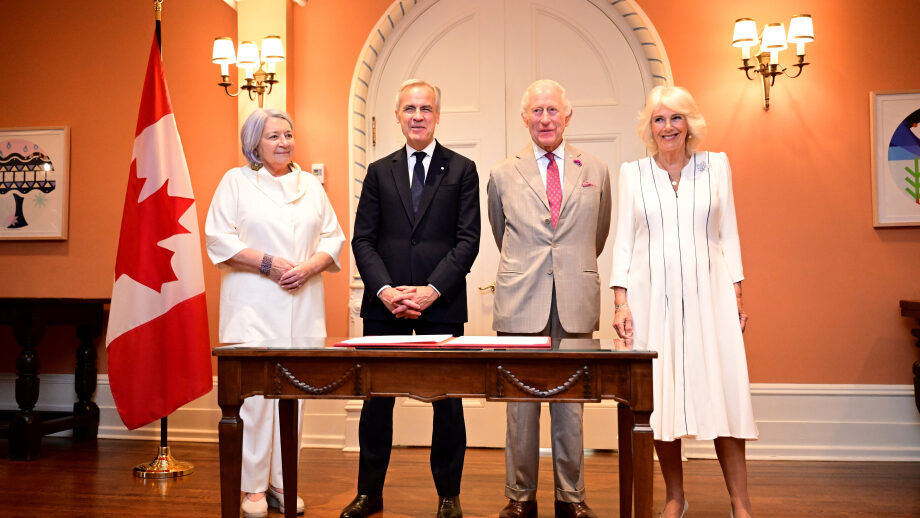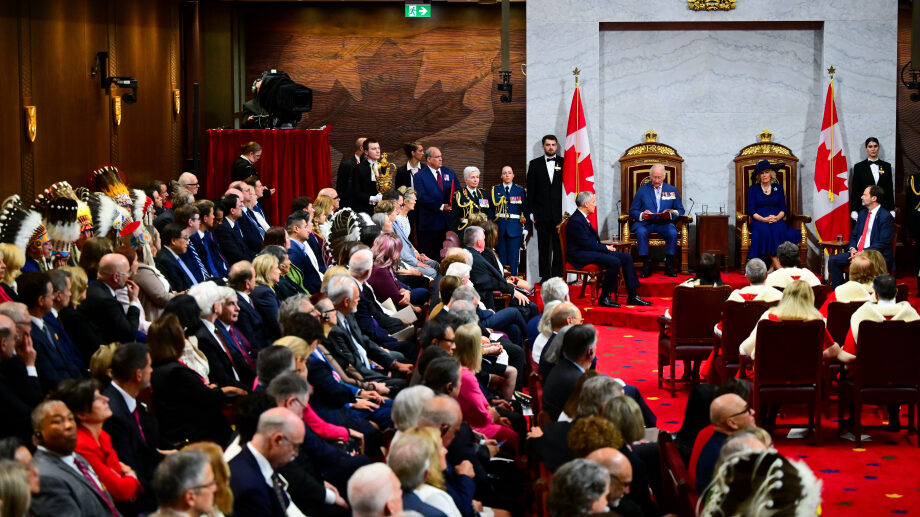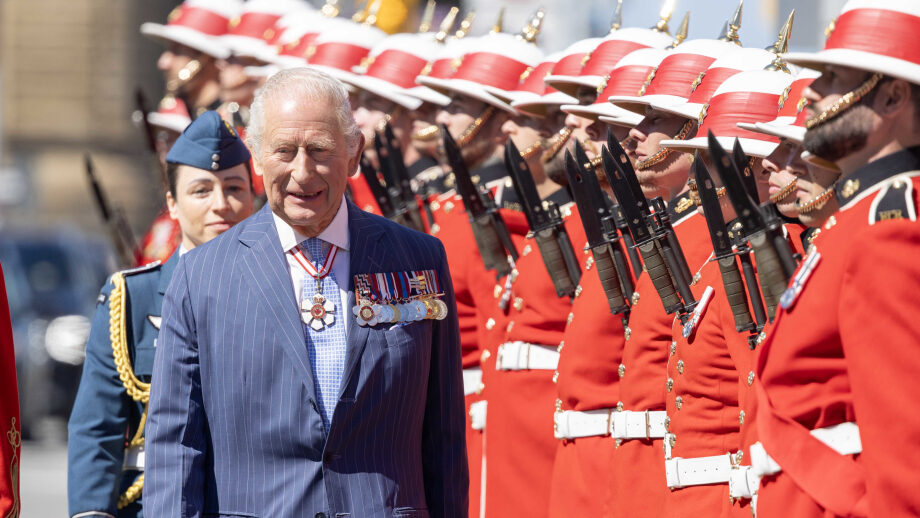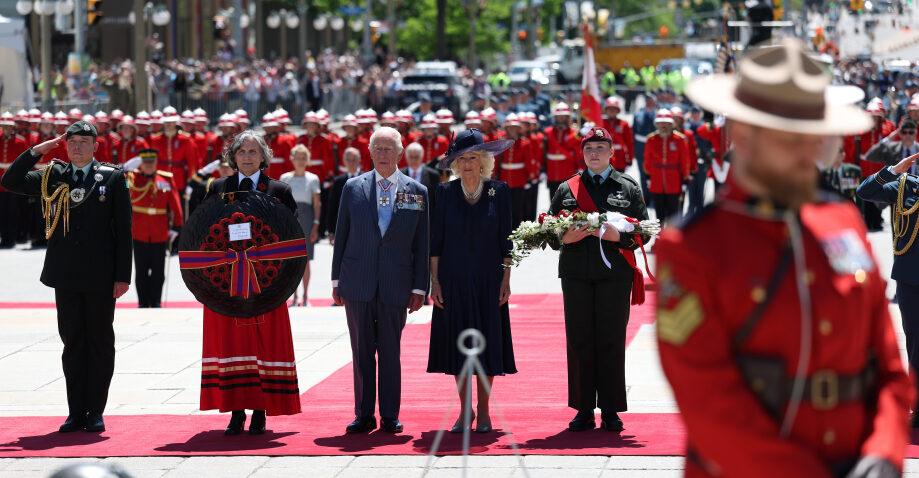Yesterday, the lucky winner of the last federal election, the new Prime Minister Carney, welcomed with great fanfare Charles Windsor (or, as he’s quaintly titled, King Charles III). Today around noon, the King delivered the throne speech and opened Parliament with “an emphasis on Canadian sovereignty”—a message aimed at both President Donald Trump and trade-war-weary Canadians. Faced with annexation provocations from the White House, Carney has chosen to assert Canada’s sovereignty by… having the reigning monarch of England perform a hollow ceremony on Parliament Hill.
Speaking in front of the Commons today, Mr. Windsor said the Crown “represents stability and continuity from the past to the present. As it should, it stands proudly as a symbol of Canada today, in all her richness and dynamism.” But allow us to doubt that.
Let’s take a look at Canada’s relationship with the Crown and what it says about the state of the country.

Rule Britannia (Over Canada)
As a member of the British Commonwealth, alongside countries like Australia or New Zealand, the foundations of Canada’s existence are based in British colonial law. The British North American Act (BNA) was the law passed in 1867 that birthed the Canadian confederacy.
Some changes and amendments were made over the course of over a century. In 1982, Queen Elizabeth II proclaimed the Constitution Act in Ottawa, transferring all legislative power over Canada from London to the federal and provincial governments.
Today, the Crown has no practical power over Canadian governance, but all Canadian governance is in the name of the Crown. It serves as a symbolic figure that, according to the government, acts “to unite Canadians and give a collective sense of belonging to our country.” That is to say, the Crown serves to differentiate Canada from the United States.
There is a distinct irony in using Canada’s history as a subject of Britain to respond to the threat that Canada be made a subject of the USA. Parading last century’s monarch doesn’t scream “unified and sovereign state.” Rather, it recalls the bygone era of Canada’s dependence on Britain and highlights fissures between and within Canada’s nations.

In All of Us Command?
In a Pollara poll concluded this month, a survey of 3400 Canadians from across the country showed that 45% of respondents believe Canada should remain a constitutional monarchy, while 39% are in favour of abolishing the monarchy and 16% are unsure. While 45% is nothing to scoff at, it still doesn’t suggest the Crown is a unifying symbol. 54% of respondents in the second-largest nation in Canada, Quebec, expressed that the monarchy should end.
Is anyone surprised that the average Québécois, whose parents most likely remember the October Crisis and the domination of Quebec by an English-speaking ruling class, would reject the King as a herald of sovereignty? It’s only in the past 50 years that Quebec gained some recognized linguistic and cultural rights as a “nation within a nation.” And even today, there’s no shortage of anti-Quebec sentiment in the rest of Canada.
How about the Indigenous nations of Canada? First Nations, Inuit, and Metis people hold many differing views on the Crown, from a friendly signatory of treaties governing shared land use, to a body that outright subjugates Indigenous people. What all these nations have in common is another core piece of legislation shaping their nationhood within Canada: the Indian Act.
The Indian Act is as important to the foundations of Confederacy as the BNA. Also receiving royal assent in 1867, the Indian Act made all status Indians (Indigenous people the government recognized as Indigenous) not only subjects, but wards of the Crown. The state assumed a paternalistic role of governing every aspect of Indigenous existence within Canada, leading up to the campaigns of extermination, assimilation, and dispossession of Indigenous peoples. With all this considered, could one blame an Anishinaabe worker in Thunder Bay, or a Mi’kmaq fisherman on the east coast for not viewing rallying around the King as synonymous with exercising sovereignty?
Even in English Canada, the welcome for the Royals will be lukewarm at best. In the original provinces of confederation with the closest ties to the monarchy—Ontario, New Brunswick, and Nova Scotia—only about half of all those surveyed support its existence. As for western Canada, where the term “referendum” or “constitutional crisis” is thrown around as frequently as the word “oil”, less than half of those surveyed supported the monarchy.

Confederacy, Past and Future
To be entirely blunt, if the feds have to look across the ocean and to Canada’s colonial history to protect itself from American encroachment, the confederation in its current form is beyond saving. Half the country doesn’t care for what the head of state has to say, if they don’t already outright view him a symbol of subjugation rather than sovereignty.
Departing from the world of symbolism, the confederation of Canada is a multinational body dominated by Anglo oligarchs, with some Québécois partners who are permitted to do their own thing (for the most part). Maybe one day, we will see some Indigenous oligarchs play by the same rules as Quebec, albeit with little if any of their own land.
And as usual workers, regardless of nation, will scrounge to get by and be ever shackled to the whims of whichever stuffed-shirts are running the country on behalf of the Westons and Irvings, who will play ball with even greater oligarchs in the U.S. or the E.U.
Or perhaps Canadians can break away from the stale, lopsided confederacy and constitution birthed in the halls of Westminster, whose authority emanates directly from an unelected leader who inherits power through blood lineage. Let’s focus on the true symbols of Canadian sovereignty, like those of the republican and antimondreams of the Patriotes, Upper Canada and Red River Rebellions. Canada can exist without the Crown, without the fat-cats on Bay St., and without legislating nations into being junior partners or wards of the state.
It’s simple: the majority of the country doesn’t support the monarch of confederation. Let’s roll up our sleeves and start building a project based on that majority, which recognizes Canadian sovereignty as their sovereignty, our sovereignty.

Be part of the conversation!
Only subscribers can comment. Subscribe to The North Star to join the conversation under our articles with our journalists and fellow community members. If you’re already subscribed, log in.